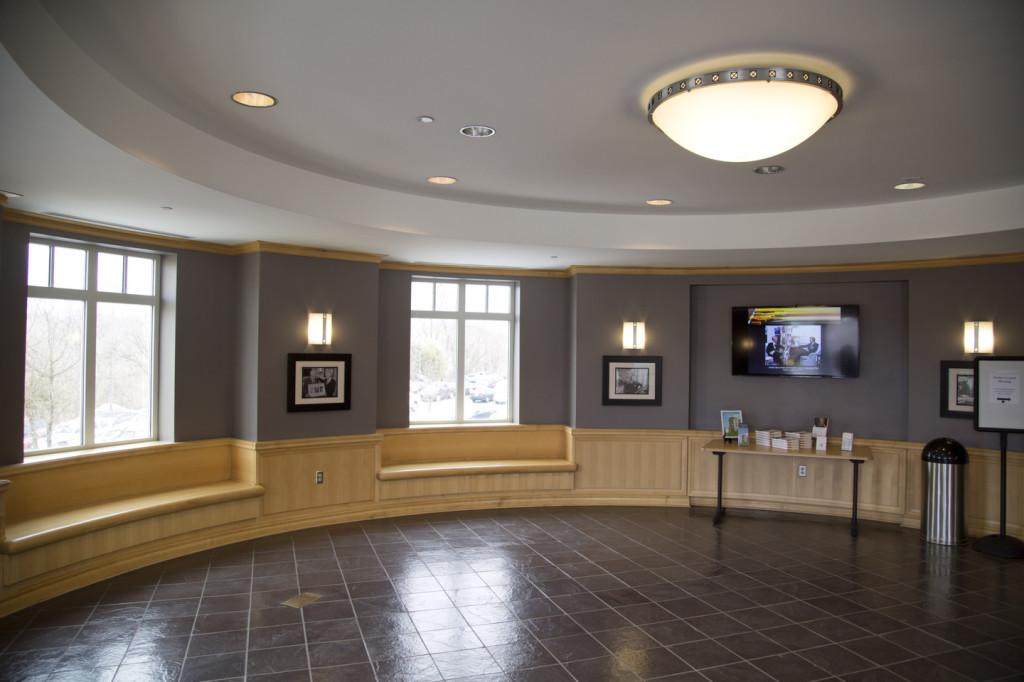Shepherd University’s “First Friday Politics Forum” kicked off last week in the Byrd Center for Legislative Studies. Dr. Max Guirguis, Dr. Jay Wyatt, and Mr. Leigh Koonce comprised the discussion panel. Each panel member gave a preview of the upcoming midterm elections – Dr. Guirguis from a political science viewpoint, Dr. Wyatt from a historical perspective, and Mr. Koonce with an eye towards voter issues – before all took questions from the audience.
Dr. Wyatt started the forum, discussing how midterm elections have historically received less attention than presidential elections, especially among Democratic voting demographics – “voter turnout during midterm elections is good for [Caucasians], males, and the elderly, who typically vote Republican. Minority voters tend not to turn out for midterms.” This fact is recognized by politicians, including President Obama, who recently said Democrats get “clobbered” in midterm elections.
Midterm elections occur because every two years, all 435 members of the House of Representatives and one-third of Senate members are up for reelection, while the President is only elected every four years. This means that midterm elections tend to receive less publicity, and a lower voting turnout.
The same theme was echoed by Dr. Guirguis, who pointed out that midterm elections are deridingly referred to as “off-year” elections. Dr. Guirguis referred to the Republican House takeover in 2010 as a prime example of this. He explained, “Republicans had a strategy called ‘REDMAP’, Redistricting Majority Project, which they used to gain a majority in the House of Representatives, by taking control of the state legislatures and gerrymandering the congressional districts.”
Every ten years, a U.S. census is taken, and the results are supposed to be used to redraw each state’s congressional districts to more accurately represent the population distribution. Gerrymandering is the practice of redrawing a state’s congressional districts in order to favor the political party in power, giving them more seats in the House of Representatives.
Mr. Koonce, a student at Shepherd University and former Picket News Editor, explained that students in particular should be concerned with the midterm elections for a variety of reasons. “Voter turnout is lowest among [our demographic], 18 to 24 year olds. But there are many issues that should concern us.”
Koonce explained that voting rights, the gender wage gap, student loan restructuring, the minimum wage, and female representation in politics are all important to college age voters, and should drive turnout to the midterm elections. “Both Democrats and Republicans agree that the gender wage gap is an issue,” Koonce said, “but they disagree about how to fix it.”
Koonce also explained that changes in how interest is calculated on student loans, and a proposed increase in the federal minimum wage, could drastically change the economic outlook for many college students in the near future. In addition, Koonce referred to West Virginia’s low rate of female representation in both federal and state-level government offices as, “an issue that should concern all of us.”
After all three panel members had finished speaking the floor was opened for questions and comments. One gentleman remarked that he had recently been to Scotland, where they are considering a referendum on independence from the U.K., and that, “if you ask anyone there how they are going to vote, you’ll get a ten-minute to an hour discussion.” He also stated that “they are expecting an 80 to 90 percent turnout.”
Several people asked why turnout among young voters was so low. The consensus from the panel seemed to be that there was a mutual disconnect between young voters and politicians. There was concern from many in the audience about the difficulties presented in voting. Dr. Wyatt pointed out that, “Historically, the United States has not made it very easy to vote – Election Day is not a holiday, and many people have to spend considerable time waiting to vote.”
Koonce referred to reports that, in Florida, people were lined up for hours waiting to vote in the last election. “I live in Jefferson County, so the most I’ve ever had to wait to vote was five minutes in an air conditioned building. I can’t imagine waiting seven or eight hours in the heat and humidity of Florida.”

